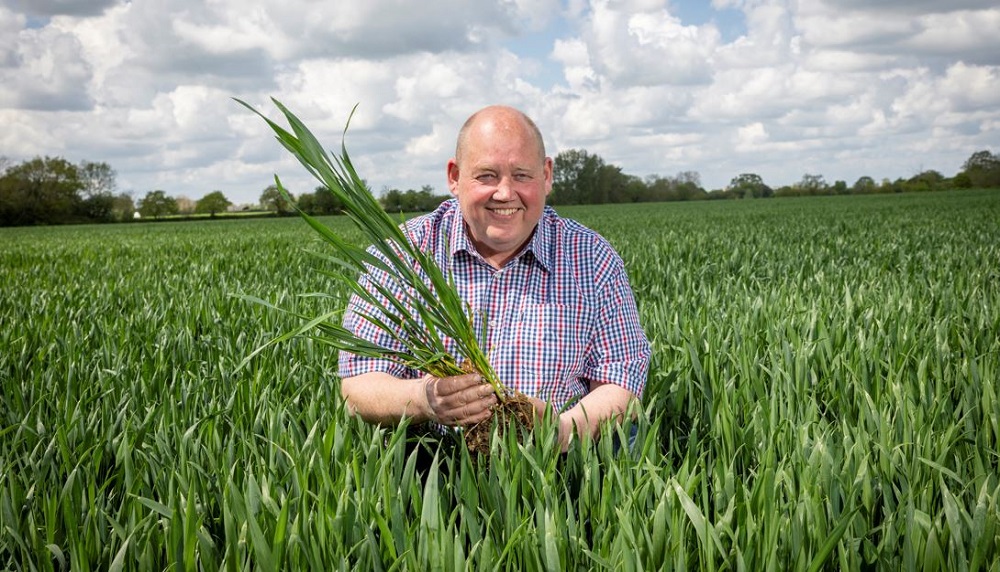The Norfolk arable farm with practical research at its heart
Wednesday, 7 February 2024
The latest Strategic Cereal Farm East will use its own data and research connections and establish new trials to optimise input use. Joe Martlew explains.
The second Strategic Cereal Farm East (2023–2029), at Morley Farms Ltd., is a 750 ha arable farming enterprise (combinable crops and sugar beet).
However, the commercial farm comes with a twist. Hosting trials since 1965, it has a rich research history and a passion for developing practical results for farmers.
The Morley Agricultural Foundation (TMAF), which owns the land, invests directly in agricultural research, professional development for farmers, educational initiatives for children and student studies.
Host David Jones (pictured) wants the Norfolk-based farm to dive deeper into trialling and continue its commitment to bridge the gap between research and farming.
Recently, the farm set the aims and the work needed during the six-year programme. The reduction of inputs is at the top of the farm’s wish list.
Led by NIAB, in collaboration with ADAS and Harper Adams University, the first-year trials and assessments are underway, which tackle three topics.
Cultural weed control strategies (rye-grass target)
Keeping herbicide-resistant weeds at manageable levels is a challenge for many farmers. AHDB’s black-grass guidance is based on a relatively good understanding of the control levels associated with various techniques, as well as the boost associated with layering controls. This work will start to develop a similar understanding for Italian rye-grass, which is particularly problematic on the farm.
The field trials, which exploit variations in grassweed pressures, include:
- Cultural control methods, such as drilling date, seed rates and variety choice
- Non-chemical control methods, such as inter-row cultivation and weed surfing, combined with cultural control
- Non-crop stewardship options
To measure success, weeds (including the seedbank) will be monitored, with crop performance and costs/gross margins assessed (where applicable). The significance of any weed seed transfer across the farm, via cultivation equipment, will also be determined.
Integrated pest management (BYDV target)
This work will assess BYDV levels in resistant and susceptible winter wheat varieties (in adjacent fields). It will also build on recent AHDB research to examine the role of decision support tools in reducing or eliminating insecticides.
The field tramline trials will examine:
- T-Sum model (targets the second generation of aphids)
- Pilot ACroBAT model (considers aphid population dynamics, BYDV pressures and crop risk)
- No insecticide application
The work will monitor aphid virus vectors, natural enemies, disease spread, yield impacts and provide cost–benefit information on the approaches.
Efficient nutrient use (nitrogen target)
Nitrogen variability
Like many farms, Morley Farms has a large variability in economic optimal nitrogen application rates, nitrogen use efficiency (NUE) and yields. Understandably, the farm wants to pinpoint the causes of variation.
Thankfully, the farm has Morley Soil and Agronomic Monitoring Study (SAMS) sites to hand. Each site is about 150 m2, with the network covering areas with high, low and variable yields (and headland sites). They are a treasure trove of data, providing long-term (2018–23) information on soil assessment results, grain nutrients, yield and management records for 29 arable sites.
NUE is already assessed at eight sites, with Old Hall Piece Field particularly interesting. It is the only SAMS field (with five SAMS sites) in winter wheat for harvest 2024 and has historically variable yields and soil electrical conductivity (EC).
EC is a useful measure because it can help estimate soil texture, which is linked with NUE and yield variation.
The field will host replicated nitrogen response trials in three contrasting management zones.
Variable rates
Some farmers use N-sensors to vary nitrogen application rates, which often apply more nitrogen to areas associated with lower biomass. The theory is that this will boost growth and level the playing field.
As this may not be the best universal approach, the farm will compare variable-rate approaches (against the farm standard) to determine the best way to exploit this technology.
Foliar-applied nitrogen
Comparisons of foliar-applied, controlled-release nitrogen with a traditional soil-applied nitrogen dose at the final split have recently been made at the farm. A replicated tramline trial will build on this work to provide a solid foundation to help unpick nitrogen responses and deliver the greatest NUE.
The research will investigate all elements of NUE, consider other major nutrients (phosphorus and potassium) and foster collaboration with other major research projects (for all three topic areas).
Did you know?
The first Strategic Cereal Farm East (2017–2023) was based in Suffolk.
 Gary Naylor Photography
Gary Naylor Photography
Topics:
Sectors:
Tags:


